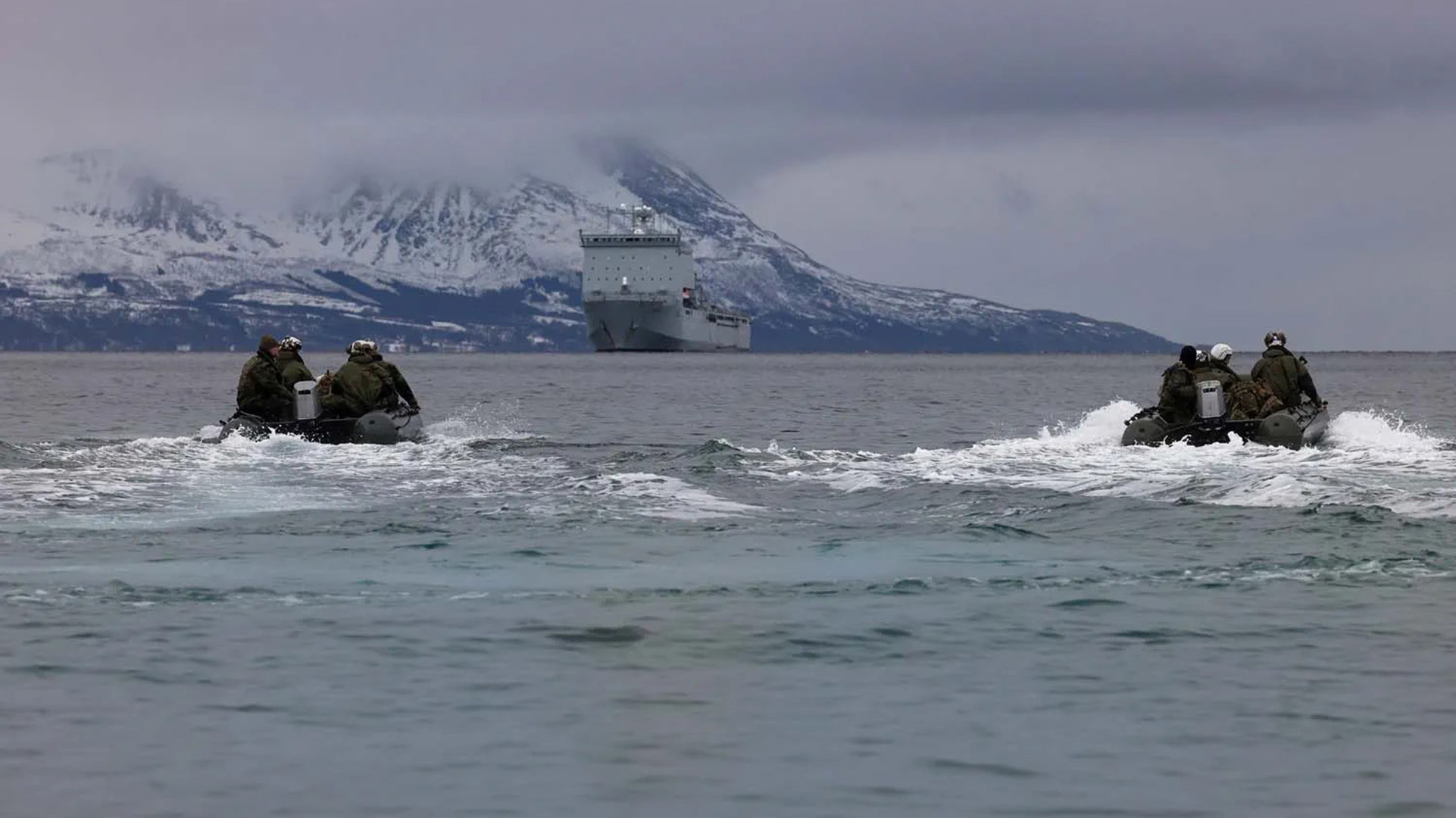
Royal Marines lead Arctic raids as Nato deters aggression on its northern flank

More than 2,000 personnel from the UK Commando Force have spent the opening months of the year training for cold-weather warfare tactics with their Nato allies in the frozen reaches of northern Norway.
The deployment reached its peak on a multinational exercise, codenamed Joint Viking, which involved 10,000 allied troops from nine nations.
The annual exercise demonstrated that the UK can help deter aggression on Nato's northern flank and across close ally Norway's complex coastlines, fjords and mountains.
Commander James Smith, Commander Amphibious Task Force, said: "Exercise Joint Viking has allowed the UK Commando Force to deepen its multilateral partnerships, working with key allies as we seek to deter Russia on Nato's northern flank.
"Operating from the sea and on the land, we continue to set and shape the High North theatre as the advanced force ahead of any crisis or conflict by demonstrating our flexibility and adaptability in challenging conditions."
During the operation, 45 Commando launched night-time raids onto the rugged and mountainous Senja Island from the amphibious ship RFA Lyme Bay– making their daring mission from Merlin and Wildcat helicopters from Commando Helicopter Force and small inflatable raiding craft.
The marines were followed onto the island by the Netherlands Marine Corps – the Korps Mariniers.
While UK and Dutch marines got onto the island, Wildcat helicopters repelled enemy fast attack craft simulated by the Royal Navy's P2000 patrol ships.

The Royal Marines completed reconnaissance patrols to understand more about the 'enemy' and their strength before strikes were fired to weaken the opponent.
The marines' work meant that a larger force could land ashore and capture Sørreisa, a Norwegian port.
"Having the opportunity to be a part of the staff has given me valuable insights into what makes successful amphibious operations," Lieutenant Kofi Bruce, Royal Marines, said.
RFA Lyme Bay arrived in the region at the end of February and was involved in the allied amphibious task group, which was led by Dutch ship, HNLMS Johan De Witt.
Standing Nato Maritime Group 1 protected the amphibious task group as it entered the fjords near Senja.









